You might recall, back in April 2016, we celebrated Autocar India’s 200th issue, and made a list of all the cars we’d tested from 0-200kph over the years, and told you how they performed. I certainly do. Putting that list together was a celebration of its own kind, and it stirred up a lot of great memories in the team. We all swapped stories – fun, and at times a little terrifying even – of what testing each of those cars was like. Some of the more ferocious ones could make you break into a cold sweat just launching them off the line, while others were so calm and composed at 200, you’d have to keep one eye on the speedo or you wouldn’t realise how fast you were going. And as we consigned the last of those magazine pages to print, I remember we calculated how long it would be until our 250thissue, where, undoubtedly, there’d be a list of cars we’ve tested to 250kph. ‘Four years? We’ll test many more cars by then,’ we thought. ‘And at the rate they’re launching performance cars nowadays, that is going to be one hell of a list!’
Six!
That’s how many cars feature on this illustrious and exclusive list (plus one very special motorcycle). But that’s not because our ambitious prediction from four years ago was wrong – there are more high-performance cars on sale right now than ever before. What we hadn’t accounted for was just how much further 250kph is from 200kph. Not only do you need much more performance to achieve that 25 percent gain on the speedometer (a fast diesel luxury sedan will no longer cut it), you also need to cover a far greater distance, and spend considerably more time with the accelerator pedal pinned to the firewall. Moreover, temperature and weather conditions matter too, and unless they’re absolutely perfect, it’s simply not safe to go beyond a certain speed. So, while a lot of cars we’ve tested are capable of doing 250kph or more, the stars really need to align in order to properly crack the magic number in a controlled, scientific manner.
That’s not supposed to be here

It’s no surprise, then, that all the cars that made it to this list are serious weapons. But what is a surprise is that they’re a good mix of different body styles, with a variety of engines and gearboxes. The first car we’re looking at might not seem like it though, as it’s a small luxury crossover with a four-cylinder engine. Three very special alphabets, however, beg to differ – AMG. The stars must’ve really aligned for the AMG GLA 45 then; it did 250kph in 40.68sec, which, relative to the rest of this list, seems like an age. But credit where it’s due, Affalterbach’s 360hp baby did it, and its 0-100kph time of 5.13sec is less than a second off the mid-engine V10 supercar that’s next on the list; it’s only beyond 100 that things started to slow down.
Supercar 101
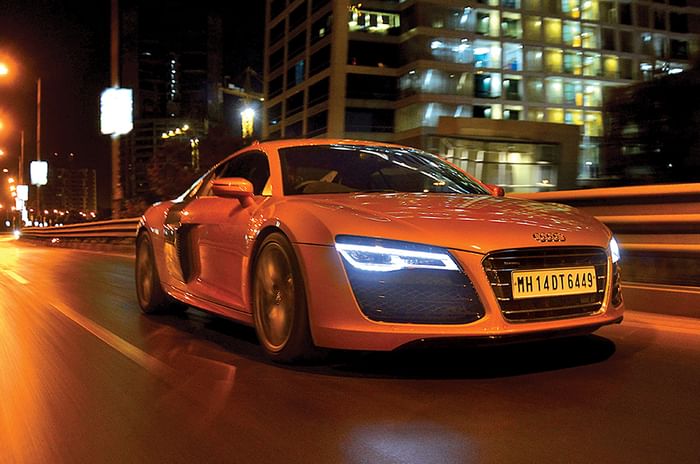
Next, the oldest car on this list – the Audi R8. If you’re wondering how that’s possible, it’s because this is the first generation of Audi’s mid-engined masterpiece. To be specific, it was a 2013 R8 V10 with 520hp; so while it wasn’t one of the more powerful later editions – the Plus or the LMX – it was the facelifted version which had just switched over from the clunky R-Tronic single-clutch gearbox, to the S-Tronic dualclutch auto we all know and love. It’s also the only car on this list that doesn’t have the helping hand of forced induction to shove it down the road, which in itself is an achievement in these days of hugely responsive turbocharged engines, as you’ll see from the next two cars on this list, also from the House of Four Rings.
Family Fast
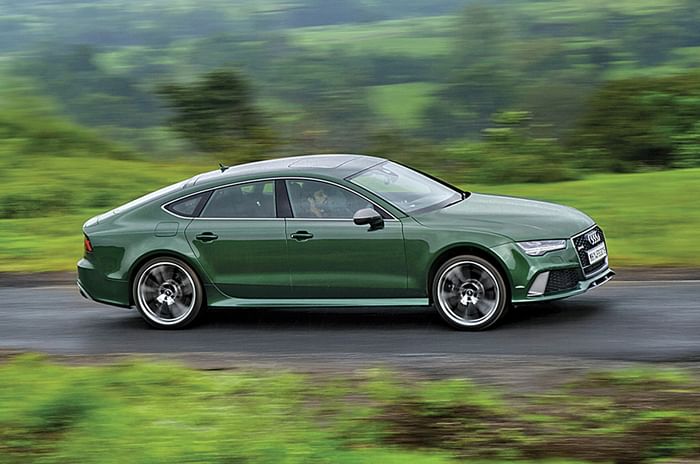
When Audi joined the super-sedan race with its RS7 (and later RS6 Avant), we’d said that what they lacked in communicative handling, they more than made up for with ruthlessly efficient acceleration. Quattro AWD and fast-acting 8-speed auto gearboxes shift these two-tonne behemoths from 0-100kph in just 3.5sec, and though they’re limited by default to 250kph, there is a paid option that unlocks a 305kph top speed – an option Audi India most certainly ticked on its press cars. Also worth noting here is that while the RS7 Sportback we tested was the 605hp ‘Performance’ version, the RS6 Avant was the standard model with a pedestrian 560hp, which could account for the 2sec difference in their 0-250 times. An even more fun fact? We later filled the RS6 with passengers and luggage, and it was only 3.2sec slower to 250!
Track Weapon
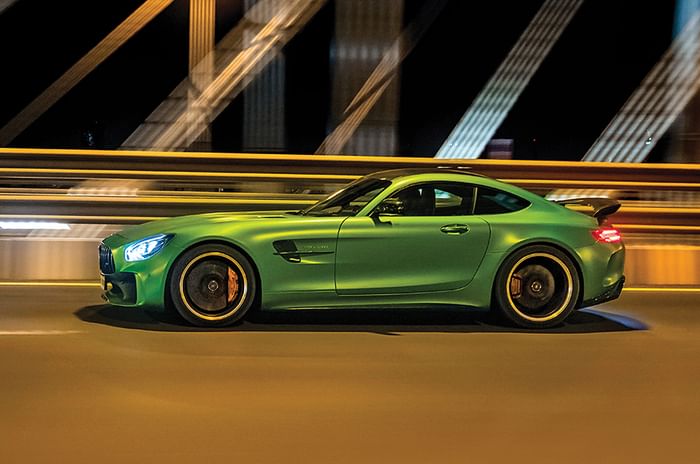
The purpose of the AMG GT R is to go to race tracks and smash the lap record, and then go back and do it again, to the point that it can be quite unforgiving in just about any other situation. It barks, it twitches, it shimmies and it will bite a chunk out of you if you aren’t careful with it. Yet, here it is, the second-quickest car we’ve ever tested from zero to 250kph in a straight line. If you look at the chart, you’ll note it’s actually half a second slower to 100kph than the heavy Audi RS7. That’s because it has to put 700Nm to the road through only two of its Michelin Pilot Sport Cup 2 track tyres, and no matter which of its nine traction control settings you’ve chosen, that’s not going to be easy. But treat it with respect and once it’s in its stride, those 585 horses (and a lot of noise) will accompany you past 250kph in 20 seconds flat.
The One
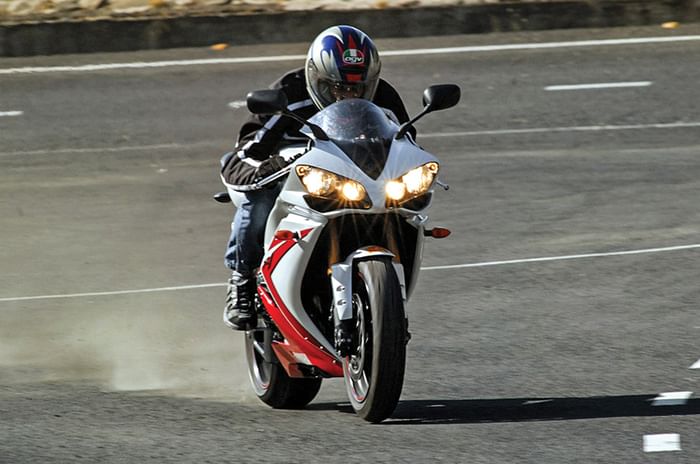
Now yes, as we’ve established, recording a clean 0-250kph run isn’t as easy as planting your foot and watching the numbers whizz past. But one thing’s for sure, things get doubly difficult on a motorcycle. When you’re down to just two wheels, it’s even more important that the conditions are near perfect. Also, apart from the concentration and control required to hold 250kph on a motorcycle, there’s the tricky subject of getting the perfect launch with so much power to put down. The bike in question – the 2008 Yamaha R1 – certainly had a lot of power, and remember, 12 years ago, electronic aids were nowhere near as sophisticated as they are today. And yet it managed to do the sprint in an astonishing 19.58sec – quicker than almost all the cars here. Litre-class motorcycles – they’re really something else.
Prancing forth
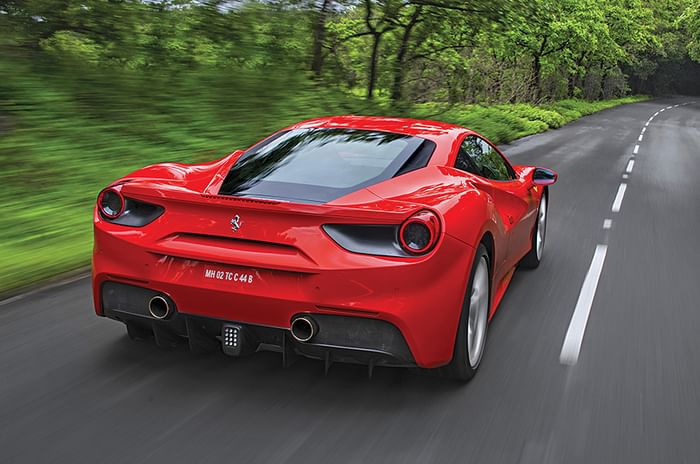
Here in India, seeing a Ferrari is rare, driving a Ferrari is rarer and performance-testing a Ferrari – just ask any motoring journalist in the industry – seems like it would require divine intervention. So when we managed to wrangle a brief chance to do just that, you can bet we left no stone unturned. Plus, with limited time and a lot of restrictions on how much we could drive the car, we had to make sure we got it right the first time. And the 488 GTB did not disappoint. 670hp and 760Nm of torque from a 3.9-litre twin-turbo V8, put to the road via a 7-speed dual-clutch auto, and the rear wheels sound like it would be trickier than in the less powerful AMG GT R, but it just wasn’t. The Ferrari hooked up, put its power down, and got on with the job at hand without a fuss, like a proper thoroughbred. The urge to reach the 250 mark overpowered the urge to play it safe and lift off early; so, the pedal stayed with the metal, until just 16.91sec later, 250kph was breached. There are family hatchbacks that take this long to get to 100kph.
Like the ‘0-200kph’ list of 2016, it was fun putting this one together too. But it’s also bittersweet because there’s unlikely to be a follow up to this. There won’t be a list of quickest cars to 300kph for our 300th issue, but that won’t be for a lack of cars. There’s simply no way for us to test to those speeds safely here in India. Well, at least we can occasionally live vicariously through others, as you’ll see elsewhere in this issue, where a number of cars have crossed that other magical 250. Miles per hour.
The ones that almost made it
While this list is certainly impressive, it’s worth acknowledging those that almost made it. Cars (and again, one motorcycle) that could, should and would have crossed 250kph under better circumstances, many of which got within a hair’s breadth of it.
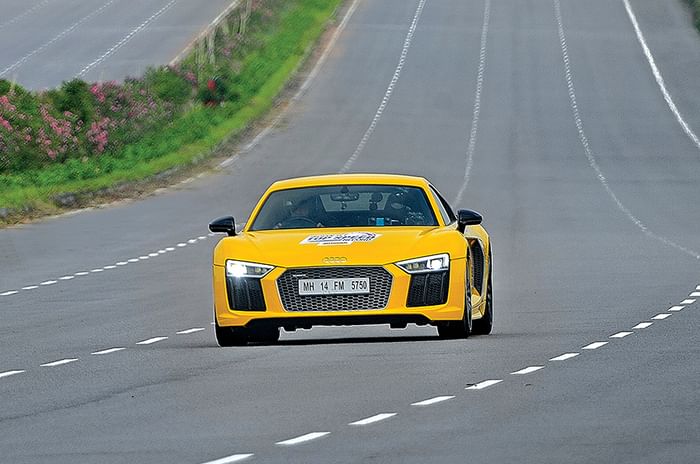
The most obvious one is the new Audi R8 V10 Plus, with which we set the Indian top speed record of 332kph in 2016. So why isn’t it on the list? Well, though we did achieve the speed, it wasn’t in our usual controlled testing environment, and so it wasn’t as quick as it could have been.

Then there was the 700hp Porsche 911 GT 2 RS which, on its way to setting the production car lap record at the Buddh International Circuit (2:00:266), was nudging 285kph on the back straight, but again, this was in the middle of a lap.
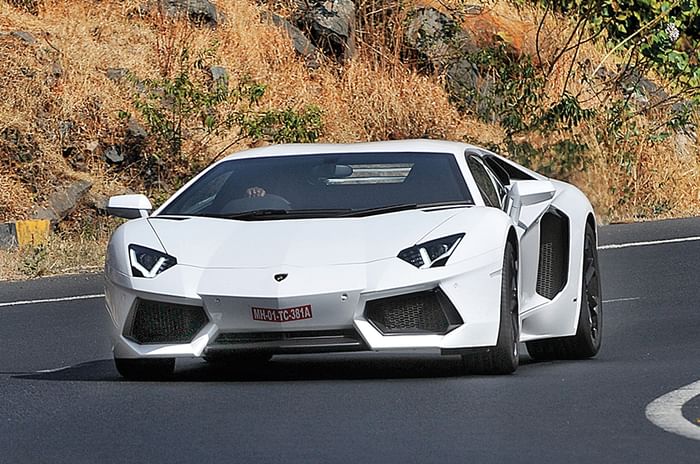
What we did launch from a standstill, in all its brutality, was the mighty V12-powered Lamborghini Aventador LP710-4, but we only got as far as 220kph. Considering it got there in just 12.3sec, it would likely have been the quickest car to 250kph too! Similarly, the latest Porsche Cayenne Turbo would have comfortably been the quickest SUV to 250 (it did 230kph in 21sec), and with a claimed 380hp, courtesy Pete’s Performance, it’s amazing that a tuned Skoda Laura managed 240kph!
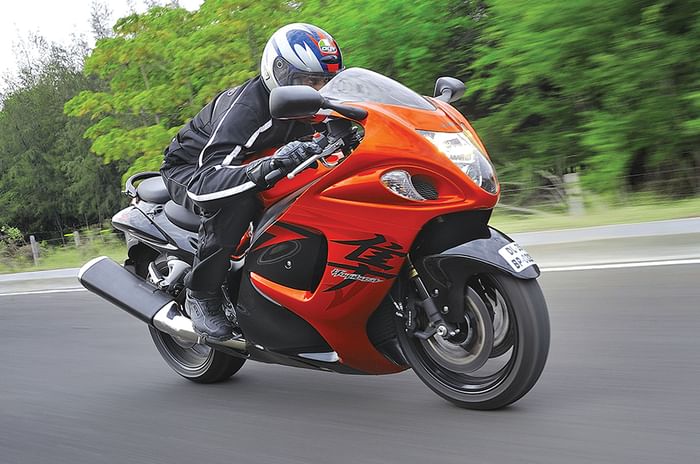
The bike was none other than the Suzuki Hayabusa, which back in 2008, did 0-220kph in just 10.26sec. Given a little more distance, it would have been the quickest vehicle we’d ever tested to 250.
What 250kph feels like
Performance test figures have been the foundation of every road test done at Autocar India. It doesn’t just give you a better insight of how fast a car can go, but also how it gets there. One of the testing parameters is clocking the maximum speed a car can achieve in each gear and, eventually, its top speed. These vary from car to car, but most performance-oriented cars of today can achieve speeds north of 200kph, even before you finish reading this paragraph!
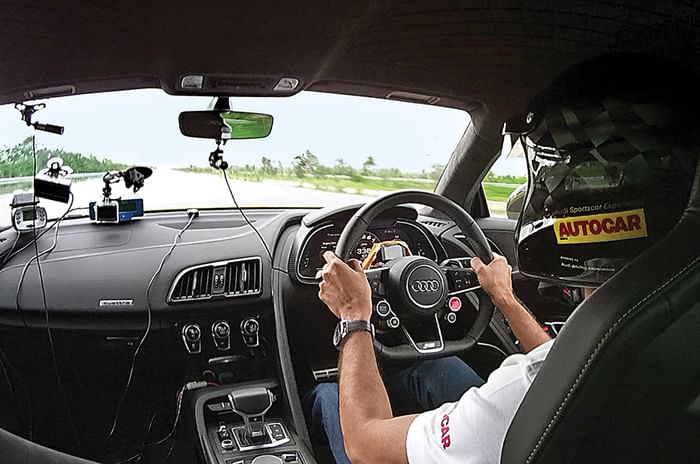
Driving a car at triple-digit speeds can be quite scary for some, and that’s because it is difficult to gauge how fast you are actually travelling until you need to slow down. Hitting these speeds may seem as simple as planting your right foot on the accelerator pedal and holding it down until you achieve it, but it’s quite risky and could easily turn into a disaster if caught off guard. To put into perspective how quickly things happen, let’s assume you are at 250kph and you decide to slow down. By the time your right foot moves onto the brake pedal and you start applying pressure, the car would have already crossed a full-size football field! Therefore, it is equally important to keep in mind the distance you will require to come to a halt after you have reached such high speeds.
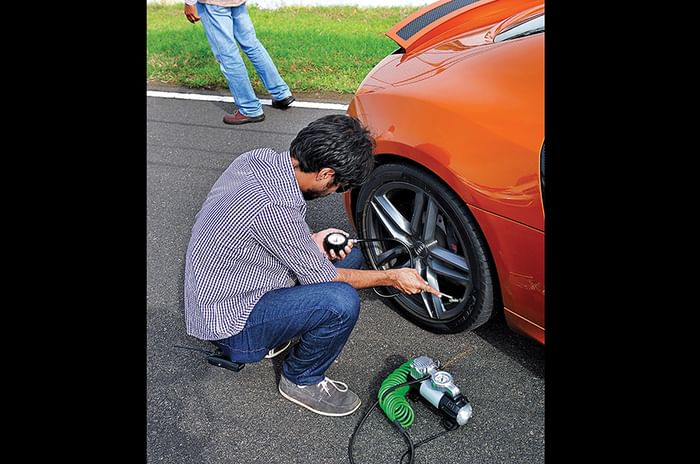
A safe stopping distance varies from car to car; it depends on the kerb weight, tyres, road surface, type of brakes, and various other factors. If all the conditions are favourable, it would be safe to assume the stopping distance is as much as was needed to accelerate to that speed in the first place.
Another important thing to keep in mind is the way you slow down from speeds as high as 250kph. It isn’t as simple as just jamming the brake pedal and coming to a screeching halt; that’s a big no-no and can unsettle the car easily. What you should do is gradually apply pressure on the brake pedal and increase it progressively as the car begins to slow down.
Under hard acceleration, things get more dramatic as you go faster and faster. Every input to the car is amplified, and the driver’s communication with the car needs to be extremely precise in order to have full control. The steering, for instance, becomes extremely responsive, and the slightest miscalculation and more-than-required input could result in the car swerving, or worse, unsettling the trajectory and going into a spin. Suspension plays an important role too; a sophisticated, well-tuned setup will cause less turbulence in the cabin at such speeds. If not, you’ll have to concentrate a lot harder, compensate and modulate your inputs accordingly.

Driving this fast demands a lot of focus. Your vision starts to narrow down to the road ahead of you, and it gets extremely difficult to look away even for a moment, not even to check your rear-view mirrors. Think of it as driving through a tunnel – why we also call it ‘tunnel vision’ – where the focus is only on what’s ahead, and everything else in your peripheral vision becomes a massive blur. Make no mistake, this is a skill one can develop only with a lot of driving experience, working their way up from slower to faster cars to get a better understanding of the mechanicals at work. It’s more like recalibrating your brain to get comfortable with the velocity, learning how the car reacts to it, and then fine-tuning your driving skill accordingly.
Driving at higher speeds gives you a huge adrenaline rush and that’s why it’s very addictive too. But it is extremely important to keep your safety and that of those around you in mind. If ever you plan to do this, please do so in a safe environment of a closed test track under the supervision of an expert.
Rahul Kakar



























